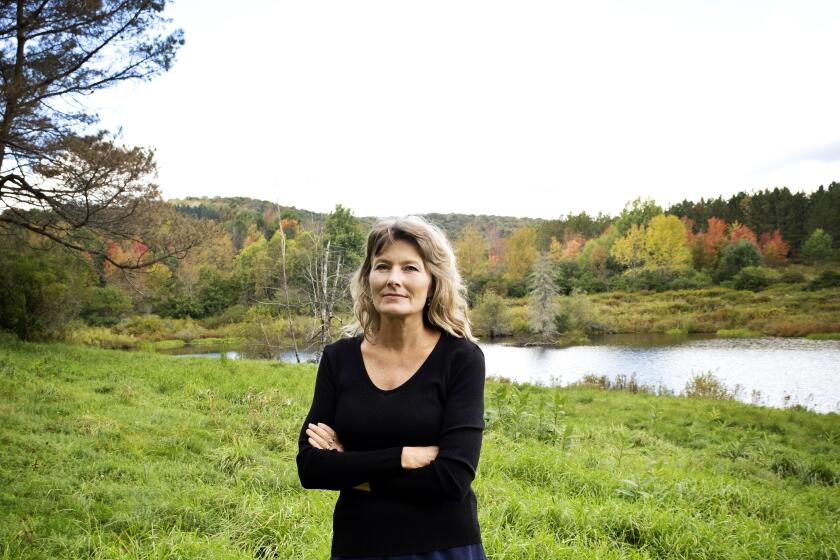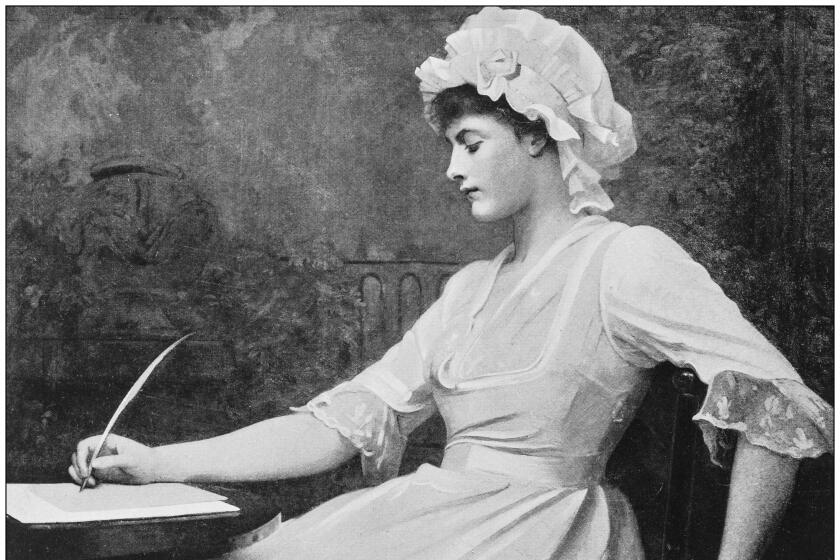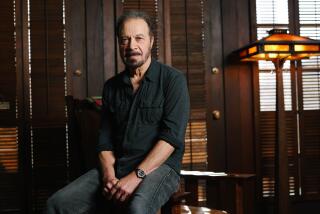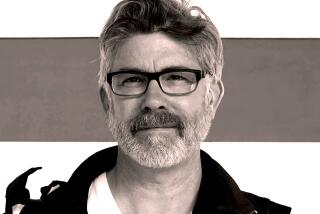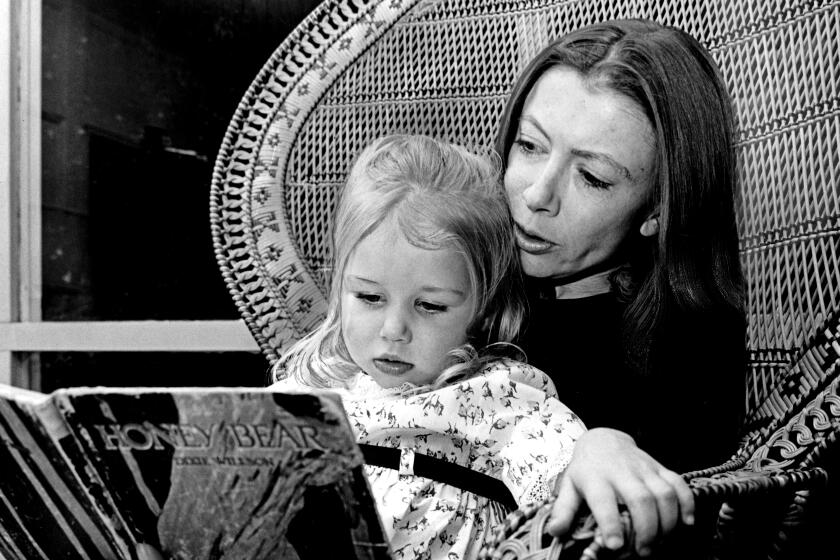Nell Zink’s addictively high-concept, low-fi fiction comes to California
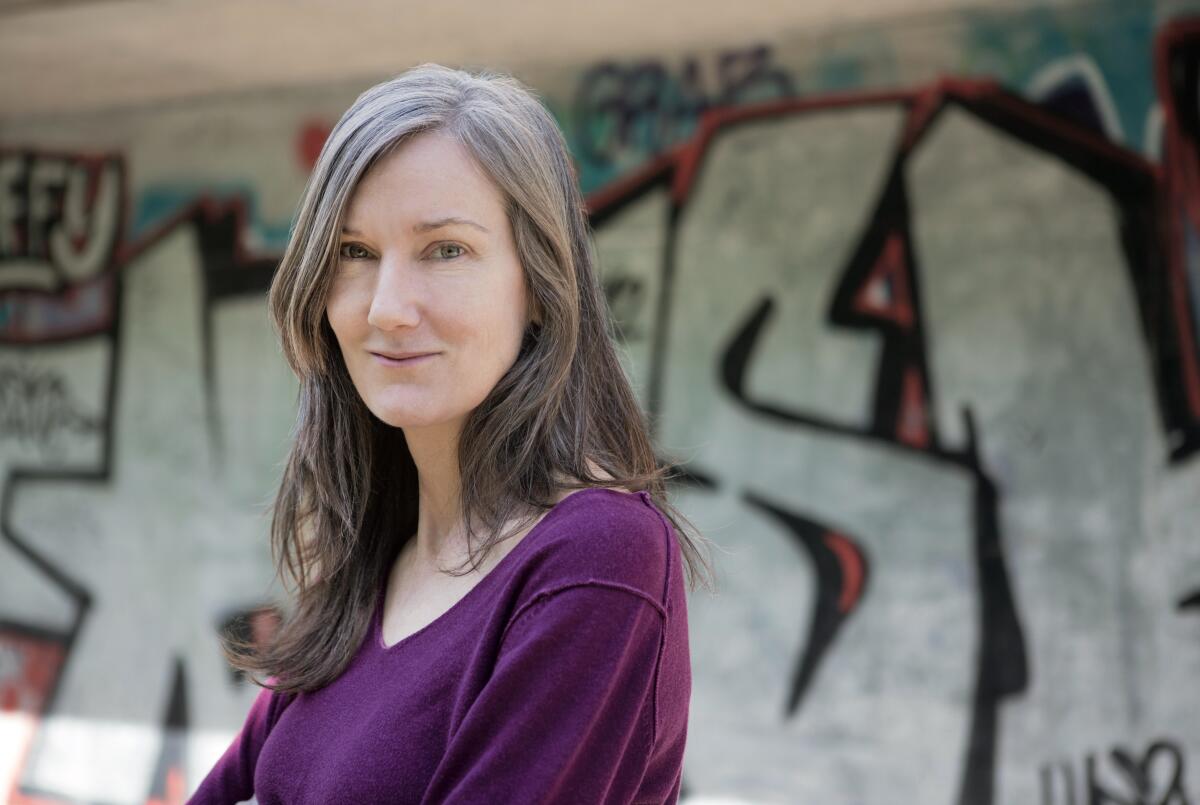
- Share via
On the Shelf
Avalon
By Nell Zink
Knopf: 224 pages, $27
If you buy books linked on our site, The Times may earn a commission from Bookshop.org, whose fees support independent bookstores.
The main character of Nell Zink’s new novel, “Avalon,” is Brandy, not Branwen, and goes by Bran. Teenaged when we meet her, she tells us that she looks like Audrey Hepburn; later someone compares her to Natalie Portman. And yet, perhaps because she wears baggy clothes and her hair in front of her face, no one seems to notice her at first. Her dad has disappeared, maybe to Australia, and her mom dies of ovarian cancer when Bran is 15, having left her to join a monastery when Bran was 10.
At the start of the novel, Bran lives with her common-law stepfather and his family in a lean-to on their farm in indentured servitude. She makes friends with a handful of rich kids on her high school literary magazine. Her friends go away to college, but she stays on the farm because her grandparents (actual, not common law) tell her college is a waste of money; they give her $500 for a car instead. She is vaguely antagonized and hunted down by friends of her common-law grandfather who are in a biker gang. It’s Torrance, in 2012. For the purposes of the novel, “Avalon” is both a place of Arthurian legend and a tourist town on Santa Catalina. Neither is ever actually visited in the course of the book.
If all of this already sounds a little farcical, it is perhaps your first taste of a Nell Zink novel. From the polyamorous cigarette cult of “Nicotine” to the naive addict of “Doxology,” or the white girl raised as Black by a lesbian mother in “Mislaid,” Zink has taken high-concept premises to transgressive extremes with clever self-assurance. Whether your first Zink novel is your last depends on your taste and also on which novel you happen to pick up. And while “Avalon’s” scope might feel smaller than the purview of her previous books, it turns out to be incredibly pleasing — if sometimes also baffling — to see a writer this intelligent keep the focus of her gaze this tight.
Zink’s confidence and authority as a writer are evident from “Avalon’s” killer first sentences: “I lay on my backpack, denying to myself that my arm was broken. The moon had made me think it was light enough to gambol down a mountain.” A paragraph later: “I sat upright. A smear of moonlight led to the isle of Avalon. But there was no island, and my arm was fine.”
Nell Zink’s novel, “Doxology,” explores change and connections in New York City after Sept.11.
The book continues at this clip, this register of absurdity, never stopping to answer any questions you might have about the weight of its details or events: How did Bran feel, for instance, about her mother leaving? When the biker gang assaults her and her common-law grandfather laughs? When, later, she is accused of killing him? Instead, the sentences zip through your brain, crackling with confidence and intelligence, daring you to wonder about such basic and uninteresting ideas:
“When the school counselor hesitantly asked, in fifth grade, whether I had thoughts of harming myself (my arms and legs were all scratched up from work) I thought: What a crazy question! Me, of all people? Is she blind?”
After her friends leave for college, Bran and her best friend Jay (wealthy, gay, adopted from Russia, a comically terrible but devoted flamenco dancer) meet Peter, Jay’s classmate at UCLA. Both Bran and Jay fall immediately, inexplicably in love with him, never mind that Peter is objectively, absurdly terrible.
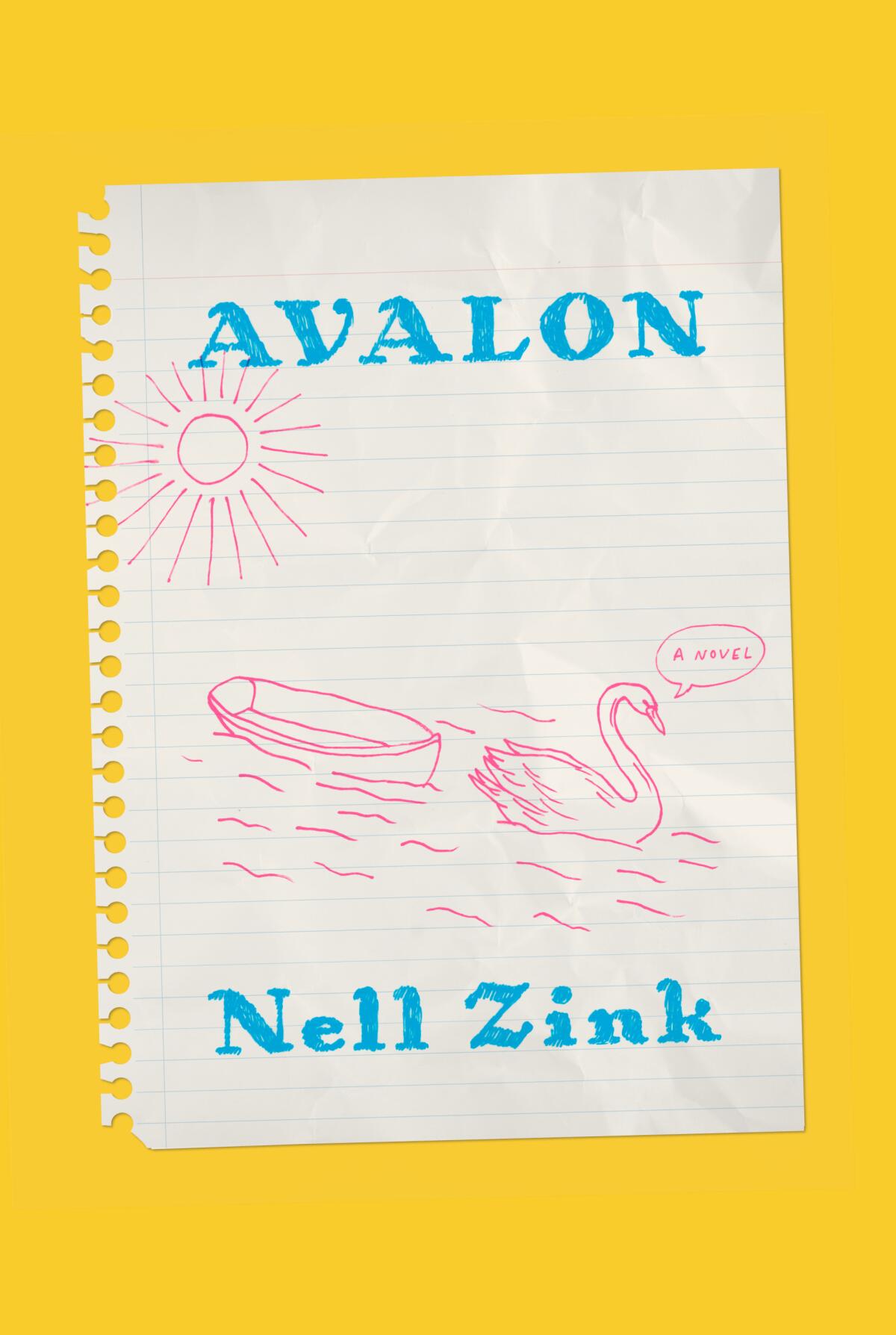
This feels harsh, I realize. Peter is a made-up character! But as I read, I started a list of examples of Peter being terrible. It came to three pages by the end. He talks so much and so wantonly — often using the word “fascist” as a stand-in for nearly everything — that Bran establishes a rule early in the book that if he goes on too long, she will merely transcribe it as “[...].”
Peter has a fiancée, Yasira, a gorgeous woman (he’s shown Bran pictures on his phone) with a dad who helps Peter transfer to Harvard and has promised him the career of his dream. He tells Bran he loves her more — too much, in fact, to marry her. (I know.)
While spending Christmas with Yasira’s family in Maine, Peter calls Bran and says: “There are eight billion people on earth, like grains of sand, and then there’s you and me.”
And here is Bran, talking, as she often does, about why she continues to go back to him: “Why could I not take my hand off the hot stove? I can tell you why: because burning up is too f— pleasant.”
I felt, in moments, about “Avalon” the way Bran feels about Peter: I could never quite tell whether it was laughing at me or welcoming me in on the joke. Was I really reading a whole book about Bran’s misbegotten pursuit? What lived beneath or alongside the humor? And why wasn’t Zink working harder to give more of those layers to me?
Jennifer Egan walks and talks — about ‘The Candy House,’ her sequel to ‘A Visit From the Goon Squad,’ and why she still believes in fiction and humanity.
There’s often a point in a Zink novel when the pleasure of the zany zip begins to wane; when you suspect it’s more joke than active engagement with the ideas it promised at the outset; when the thrilling conceits start to feel like a bait-and-switch. “Doxology,” for instance, brushes up against a litany of major historical events, 9/11, the Trump election, only to skirt their impacts or at least elide them. A book that starts incredibly strong with one generation seems to sort of putter out once it gets to the second one.
In the case of “Avalon,” the reach feels less ambitious, almost ahistorical. There’s hardly a cellphone in sight, and beyond the initial strangeness and devastation of Bran’s origins lies a pretty straightforward coming of age. But this might also be what makes it work. If, instead of being stranded in our present moment, I was on an island somewhere between Arthurian legend and the California coast, why not stay another page?
There are also long stretches of satisfying narrative, of humanity and pain. Bran’s relationship with a friend’s parents who help extricate her from the farm — their desire to save her, their inevitable falling short — proved affecting, uncomfortable and frustratingly insufficient in much the way attempts at caretaking can. She starts writing screenplays, which are both intricately rendered and quite fun to read about. The concrete descriptions of California are continually stunning and add a further layer of life.
Freud says the way to tell the difference between the artist and the neurotic is that, having exited the world and traveled up into the dream-space, the artist, as opposed to the neurotic, is able to find her way back down, to connect the dream back to reality. For most of the book, the farce felt too far from Earth for Zink to land it. I kept reading though — not only because I was contractually obligated, but because, like Bran with Peter, I couldn’t seem to extricate myself. And then something happened in the last third: The book surprised me. Something landed. The flight might be longer, floatier and more manic than some might want from fiction, but it ended up, for me, feeling like art.
Novelist Lynn Steger Strong on the revolutionary passivity of Rachel Cusk, Ottessa Moshfegh and Sally Rooney — how we’ve misread them and what comes next.
Strong is a critic and novelist. Her forthcoming novel is “Flight.”
More to Read
Sign up for our Book Club newsletter
Get the latest news, events and more from the Los Angeles Times Book Club, and help us get L.A. reading and talking.
You may occasionally receive promotional content from the Los Angeles Times.
